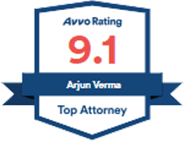
Detailed Write-up of Student Visa.
A Student Visa, F-1 Visa, is a visa for international students who have been admitted to attend school in the United States. Applicants of an F-1 visa must prove that they are solely seeking to enter the US with the purpose of studying at a US institution. Family members of an F-1 visa holder who are on F-2 visa may not attend school unless they change their status from F-2 to F-1, however, an F-2 child may attend school from grades Kg- 12. Similarly, a B-1/B-2 visa holder may not attend a school in the US unless he changes his status in the US or he has attained an F-1 visa abroad. Attending school while on a B-1/B-2 or F-2 visa without changing status or having an F-1 visa will result in a denial of a change of status to an F-1 visa.
In order to apply for a student visa, applicants must:
§ Have residence in a foreign country and must show that he has no intention of abandoning said residence;
§ Prove that he is actually a student who is eligible to take up a full course of study;
§ Maintain a full course of study while on the F-1 visa;
§ Be English proficient or receive training that will make him proficient in English. The school/institution where he will attend may show why English proficiency is not required by the applicant in certain cases;
§ Have the intention to depart the US;
§ Show availability of funds as proof of financial support for his time in the US;
§ Have the sufficient academic credits to attend a school/institution;
§ Present a SEVIS Form I-20 issued by an approved school/institution;
§ Pay the SEVIS fee;
An F-1 visa holder may enter the United States up to 30 days prior to the start date of the school which he will be attending. After the F-1 visa holder completes his studies, he is given a 60-day departure period. He may change his status to H-1B or another status during this period.
The F-1 visa is issued at US consulate for students outside the US. At the consulate, officers must verify the data in the SEVIS system and the SEVIS I-20 before issuing a visa. If no SEVIS record is in the computerized system for an F-1/F-2 applicant, the consulate will deny the application. Commuter students from Mexico and Canada may attend school full-time or part-time in the US on an F-3 visa so long as they do not reside in the US. While commuter students are subject to SEVIS, they cannot apply for F-2 visa for their dependants.
The family of the F-1 visa holder may follow to join the F-1 visa holder who is already enrolled or will be enrolled within 30 days in a full course of study or is undergoing practical training. The family members of an F-1 visa holder are not granted work authorization and may not attend school except that a child may attend school from grades K-12. Each family member who will be accompanying or following to join the F-1 visa holder must be issued a separate SEVIS I-20.
An F-1 visa holder may transfer schools if he is a bona fide student who is currently pursuing a full course of study and intends to pursue a full course of study once he transfers. He must also prove that he has the financial ability to pay for the school he is transferring to.
In order for an F-1 student to transfer schools, he must be studying full time and cannot be engaged in unauthorized employment. The F-1 student must also notify his current school of transfer plans, obtain a new completed SEVIS I-20 for the school he is transferring to and notify the Designated School Official (DSO) at the school he has transferred to. He must notify the DSO at the new school within 15 days of the start date stated on the F-1 visa holder’s SEVIS I-20 form. An F-1 visa holder may not transfer to a public elementary school or a publicly funded education program. He may not transfer to a public secondary school unless he agrees to reimburse the school for the cost of the education before the F-1 visa is issued. Failure to do this cancels the F-1 visa holder’s status and makes him inadmissible in the US for five years. If the F-1 visa holder does not comply with any of the transfer conditions when transferring to a public secondary school, it will render the F-1 visa holder out of status.
For the first academic year (9 months) while the F-1 visa holder is in the US and enrolled in school, he may not be employed unless he is working on campus. Working on campus includes working at the actual campus or working off campus at a facility that is educationally related to the school. An F-1 visa holder may only work 20 hours a week when school is in session and full time when school is not in session provided the job that they hold is not going to displace any US workers.
Transferring from one school to another requires a new authorization to work. Students who are in good standing after their 1st year here may be given work authorization if the DOS finds that the student has severe economic hardship or an internship with an international organization.
An F-1 visa holder may also receive practical training if he is a full time student for at least one academic year, which is an average 8 to 9 months, the training is not for English language training, it is related to his course of study, and it is employment for the purpose of practical training. Curricular practical training is usually an alternate work/study, internship, cooperative education or any other type of internship program. Post completion training is not available for those students that have already obtained one year or more of curricular practical training. Curricular practical training may be obtained on a “part time” basis or a “full time” basis. “Part time” basis means working less than 20 hours a week; “full time” basis means working more than 20 hours a week. If a student works on a part-time basis for 2 years or on a full time basis for 1 year, he is not eligible for post-completion practical training. A student may only undergo curricular practical training if he has been a student for at least one year and also only if the student has a job offer to apply for curricular practical training. Students who request curricular practical training must submit requests to the DSO only.
OPT, or Optional Practical Training, is training that can be used during a school vacation, while school is in session (in which case, no more than 20 hours per week will be permitted), after completing all necessary courses for a degree program or after the completion of a course study. Practical training that is unused cannot be used at a later time unless reserved. OPT is limited to 12 months and training must be completed within 14 months of graduation. In order to request OPT, a student must apply before the completion of his program and no earlier than 90 days before his completion of one full academic year. A DSO must make the recommendation for OPT under SEVIS and she must indicate the start and end dates, as well as indicating whether it is for full-time training or part-time training. A student cannot receive practical training unless he has filed for employment authorization by submitting a Form I-765 and receives an EAD card. Transferring from one school to another terminates the practical training of the F-1 student.
An F-1 student can leave the country after he receives work authorization, he may resume working as long as he is entering on SEVIS I-20 and Employment Authorization Document (EAD) card and is attending the same school. The EAD must be presented at the port of entry upon the return of the F-1 student. If a student has completed his studies and is on OPT, he must show his F-1 visa upon his return from his travel abroad.
In order to apply for a Social Security Card, a student must submit his I-20, current I-94, evidence of age, evidence of work authorization and full time attendance at school, both of which can be obtained by the DSO.
If an F-1 student is not registered as a full-time student, transfers schools without proper authorization, is employed without authorization or does not complete a full course study, he is considered to be out of status and may be deported. An F-1 student who has been out of the US for more than five months will be terminated from SEVIS. In order to re-enter the US, the student must then receive a new SEVIS I-20 and F-1 visa.
"If you would like to file a Student visa and/or require additional information in regard to Student visas, please contact Arjun Verma, Immigration Attorney, 1754 Technology Dr., Suite #214, San Jose, CA 95110. Phone Number (408) 436-1010."

Trusted & Highly Recommended
See What Our Clients Have to Say
-
Highly recommend him and his team for all immigration requirements.
I am really thankful to Mr. Arjun Verma and his entire team for their help in getting my H1B application approved. I came ...
Ramya Chandrasekaran -
Quick and easy processing with high reliability
Efficient and timely advise given. The team is always willing to assist and go the extra mile with help on paperwork and on ...
Aarti -
Sejal and Arjun were on top of everything
Excellent knowledge of the rules and great service. Sejal and Arjun were on top of everything. My mother got her green card ...
S. P.



